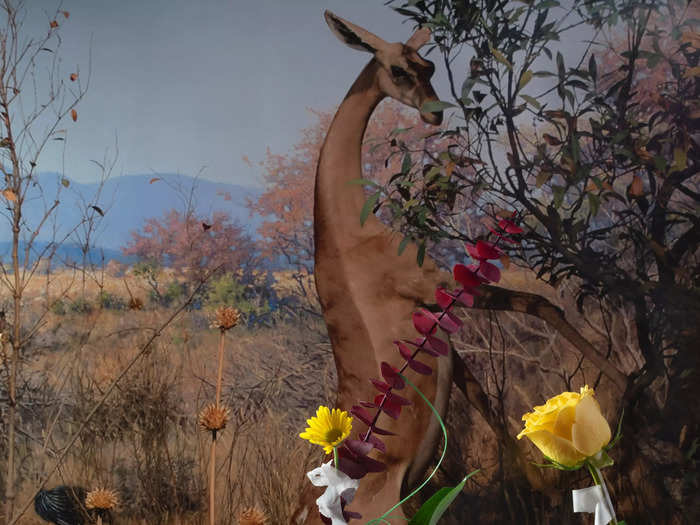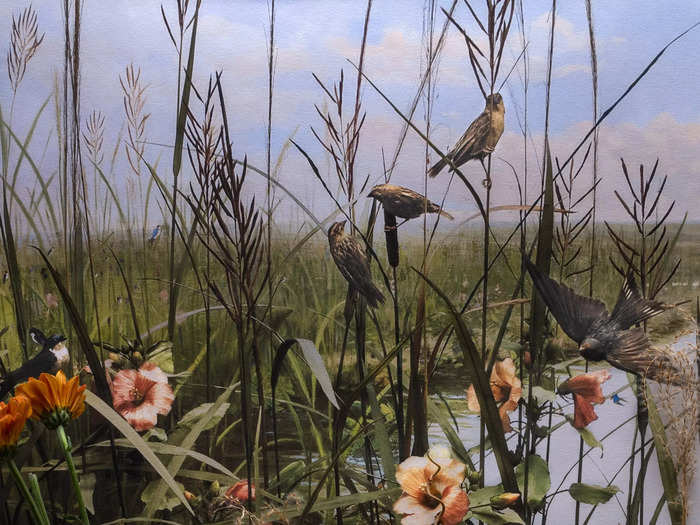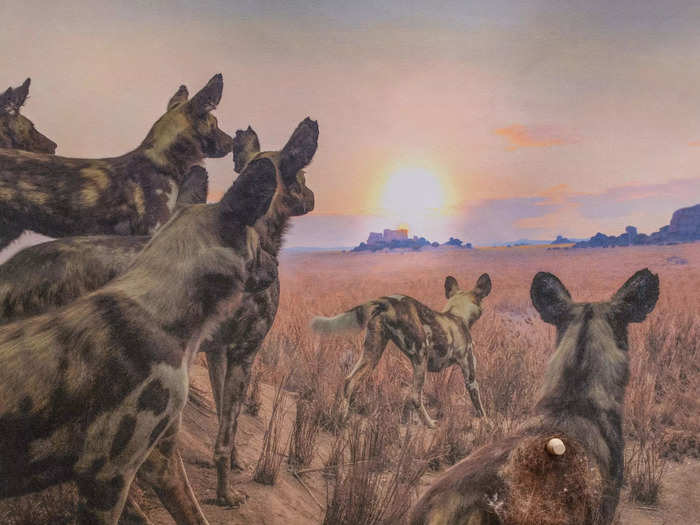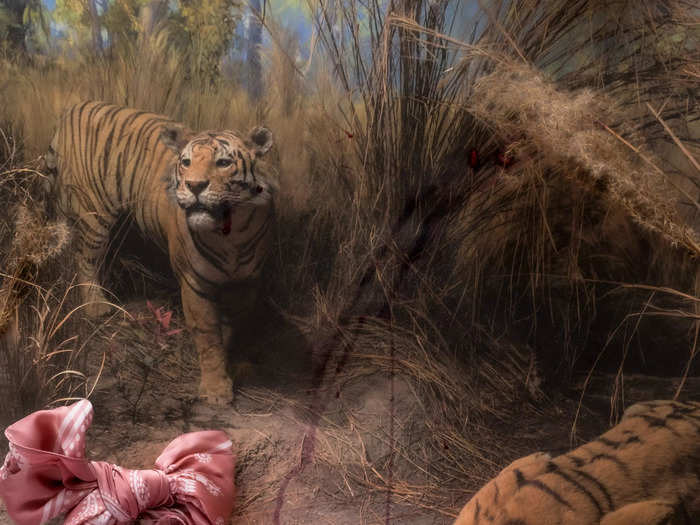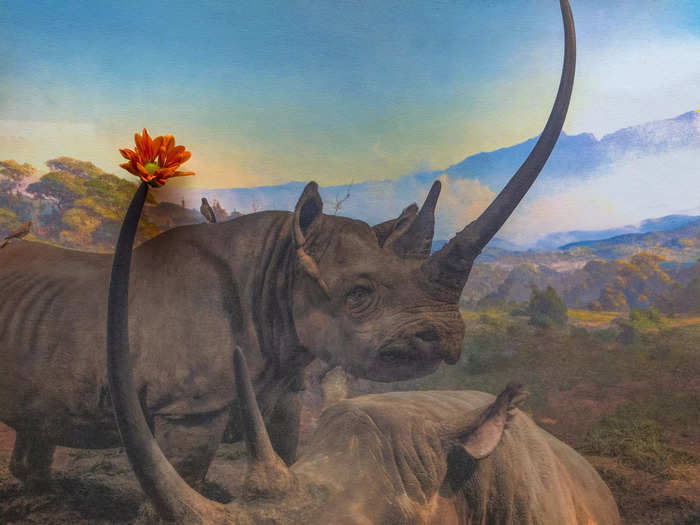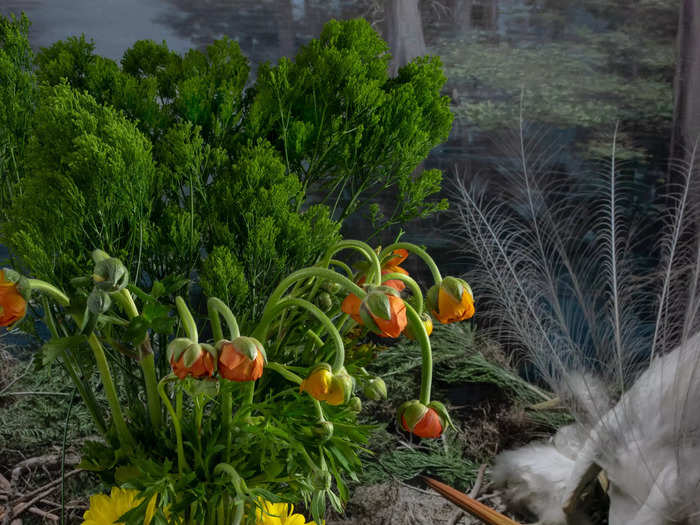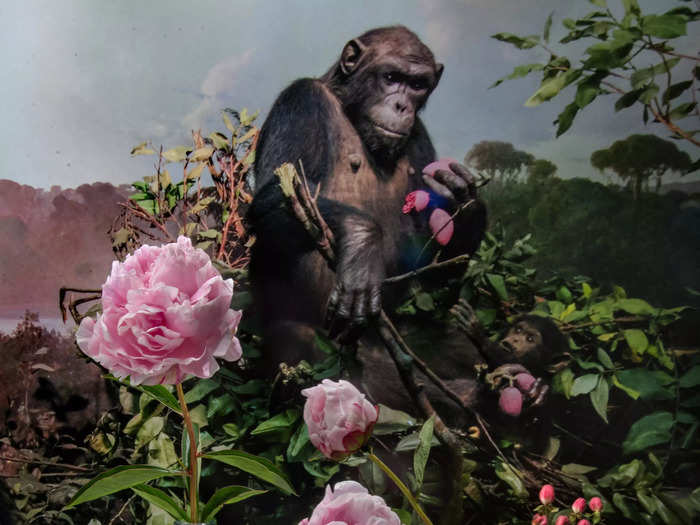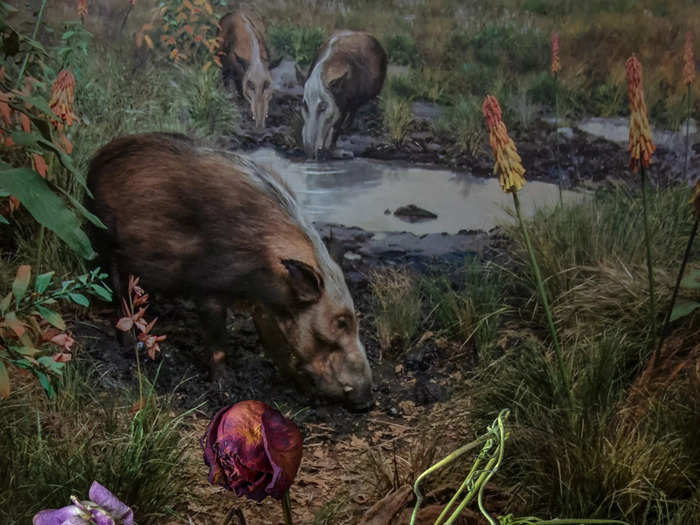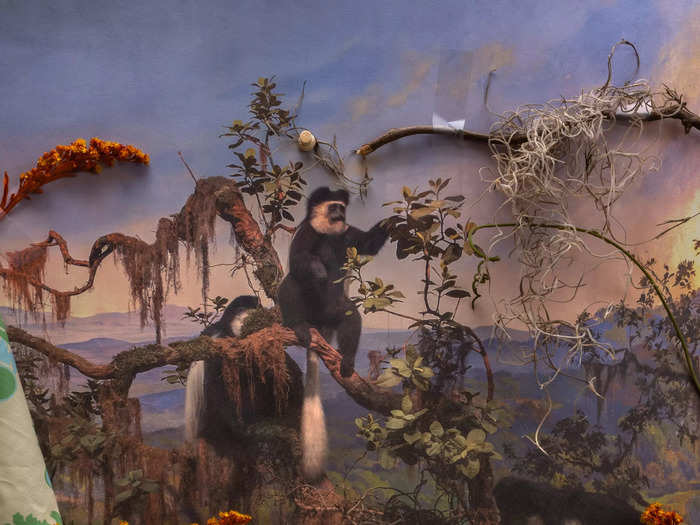"Survival."Emily Larsen
Throughout the process of giving birth for the first time, artist Emily Larsen began to feel removed from her own base humanity. "Having just gone through arguably one of the processes that we share most closely with our beastly brethren, I felt disjointed between what was happening to my body and what the medical crew was demanding of me." So Larsen, a feminist who tends to focus on the absurd and surreal, turned to dioramas of taxidermied animals at the Natural History Museum to create her series Beastly, which explores her feelings of disconnection with the natural world.
This work was a way for Larsen to deal with her newfound motherhood. Giving birth has never been and never will be an easy task. The reality of constant observation by male doctors, immense pain, and being told what to do as she struggled to control her own body shocked Larsen. Much like the animals on display at the museum, she felt as though she was displayed behind a glass pane when laying on her hospital bed.
The background has a gazelle reaching to eat from a tree top. The foreground has vases with flowers sporadically spread through the scene on top of white fabric.
"Biped." Emily Larsen
Larsen decided to tap into her subconscious emotions with these photographs: "Projects spawn from ideas or situations I'm grappling with. I tend to focus on things I find absurd, and try to find the crucial thread that defines them without going insane or losing my sense of humor."
The background has a river with tall grass aorund it and on the grass small birds. The foreground has a teal pattern fabric with feathers and a human body sculpture on top of it.
"Habitat." Emily Larsen
The photographs are not supposed to be perfect, believable representations of the animal world, but a chaotic placement of visibly fake and tangible items in order to depict a larger, worldly irony.
The background has some Hyenas in a dessert landscape looking away to sunset. In the foreground a rumpled fabric with a dead flowers, a fake cactus and a single antler.
"Predator." Emily Larsen
"It's always an aspect of my creation process to offer a fully realized illusion... using familiar imagery so that the viewer can accept the world I'm presenting, and then immediately undermine it with call-backs to reality," she explains. And Larsen's reality in this series is a rough one: fishing line, scotch tape, crinkled paper, and more all remind us that these are constructed tableaux.
The background has tigers near a water hole. Foreground has a zebra fabric and on top a sliced pomegranate some flower petals and a pink bow in top of a vase.
"Grace." Emily Larsen
This lines up with the rough reality she experienced. To Larsen, birthing has veered from a natural approach towards an incredibly intense and traumatic event deemed 'best' only by a for-profit medical system set in place by a patriarchal society.
The background has rhinoceroses one of them has a flower in its horn. The foreground has a bitten apple and fake flowers on top of a peach fabric.
"Adam and Eve." Emily Larsen
So using all of the irritation, anger, and absurdity that she experienced during the birth process, Larsen hit upon an approachable metaphor. "I juxtaposed real flora and fauna without caring for how realistic or false they appeared. I enjoy the absurd way in which we simultaneously idolize and fetishize nature, despite our deep need to distinguish ourselves from it."
The background has birds on a forest landscape. The foreground has a white cloth with a vase full of wilted flowers and greens.
"Roost." Emily Larsen
"We cling to our superiority to animals," she explains, "but the things we exalt in ourselves are relatively trivial when compared to the things we share."
The background has a chimpanzee eating a fruit in a jungle scene. Foreground has three vases with pink flowers and tree branches.
"Ancestors." Emily Larsen
The surrealism in this series is not only represented through the whimsical animals but the heavy symbolism behind each composition. Every crushed fruit, every wilted flower, every bold splatter or clinical object speaks to Larsen's visceral experience of giving birth.
The background has wild boar near a water hole. Foreground has a vase with dead and wilted flowers.
"Loss and Life." Emily Larsen
"My process is one of deconstruction and reconstruction. Sort of like if you smash up a chair and reassembled it as a table. It's that act of showing someone one thing, and then showing them what all those pieces can also mean," she elaborates. Her approach is as though she captured an image of her experience, disassembled it, translated all of the pieces into her distinct visual language, and pieced it back together again as these intricate and stunning still lives.
The background has small black and white monkeys on a tree branch. The foreground has half eaten oranges and mossy tree branches placed on top of a green, pattern fabric.
"Cousins." Emily Larsen
Larsen proudly considers herself a feminist artist — and it is very clear that her work is representative of what it feels to be a woman in a man's world. As women, our actions and thoughts are placed on a stage for everyone to observe. We are analyzed and taken apart and pieced together until our lived experiences become the very definition of surreal.

